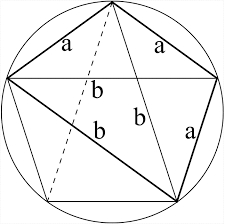The quadrilateral
The quadrilateral ABCD is composed of two right triangles, ABD and BCD. For side lengths: |AD| = 3cm, | BC | = 12cm, | BD | = 5cm. How many square centimeters (area) does the quadrilateral ABCD have? The angles of DAB and DBC are right.
Final Answer:

Tips for related online calculators
You need to know the following knowledge to solve this word math problem:
planimetricsGrade of the word problem
Related math problems and questions:
- ABCD
 AC= 40cm , angle DAB=38 , angle DCB=58 , angle DBC=90 , DB is perpendicular on AC , find BD and AD
AC= 40cm , angle DAB=38 , angle DCB=58 , angle DBC=90 , DB is perpendicular on AC , find BD and AD - Quadrilateral 80729
 Quadrilateral ABCD has side lengths AB=13cm, CD=3cm, AD=4cm. Angles ACB and ADC are right angles. Calculate the perimeter of quadrilateral ABCD.
Quadrilateral ABCD has side lengths AB=13cm, CD=3cm, AD=4cm. Angles ACB and ADC are right angles. Calculate the perimeter of quadrilateral ABCD. - Parallelogram ABCD
 We have the parallelogram ABCD, where AB is 6.2 cm; BC is 5.4 cm and AC is 4.8 cm. Calculate the height on the AB side and the angle DAB.
We have the parallelogram ABCD, where AB is 6.2 cm; BC is 5.4 cm and AC is 4.8 cm. Calculate the height on the AB side and the angle DAB. - Tunnel - quadrilateral
 How long will the tunnel AB be, distances AD=35 m, DC=120 m, CB=85 m, and angles ADC=105 degrees and BCD=71 degrees. ABCD is a quadrilateral.
How long will the tunnel AB be, distances AD=35 m, DC=120 m, CB=85 m, and angles ADC=105 degrees and BCD=71 degrees. ABCD is a quadrilateral. - Quadrilateral ABCD
 Construct a quadrilateral ABCD if AB = 10cm, AD = 6cm, DC = 6.5cm and angle BCD = 90 degrees.
Construct a quadrilateral ABCD if AB = 10cm, AD = 6cm, DC = 6.5cm and angle BCD = 90 degrees. - Parallelogram - angle alfa
 In the parallelogram ABCD the length of sides are AB = 8, BC = 5, BD = 7. Calculate the magnitude of the angle α = ∠DAB (in degrees).
In the parallelogram ABCD the length of sides are AB = 8, BC = 5, BD = 7. Calculate the magnitude of the angle α = ∠DAB (in degrees). - Trapezoid ABCD
 ABDC is a trapezoid in which AB and CD are parallel sides measuring 6 and 9, respectively. Angles ABC and BCD are both right angles. Find the length of segment BD.
ABDC is a trapezoid in which AB and CD are parallel sides measuring 6 and 9, respectively. Angles ABC and BCD are both right angles. Find the length of segment BD.
